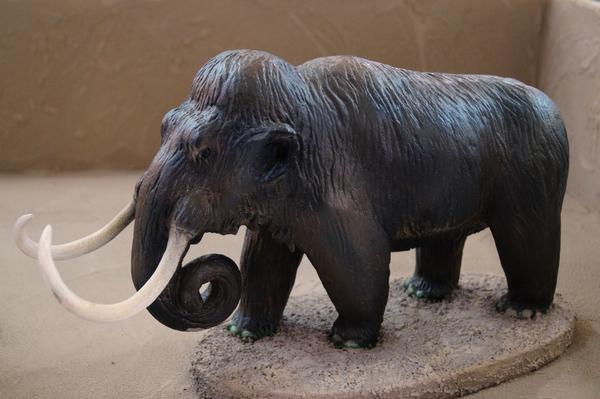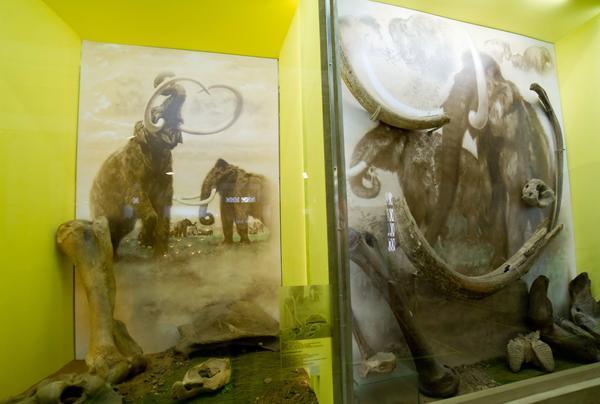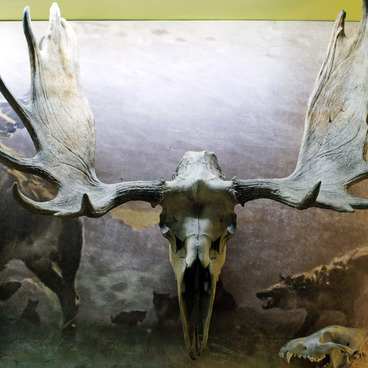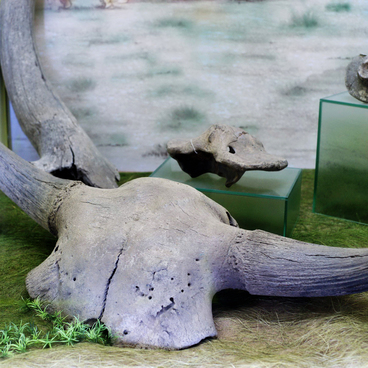The Quaternary period, also known as the Anthropogen, began some 2.5 million years ago. At that time, the Earth underwent periodic climate changes, with an interchange of glacial and interglacial epochs. Glacier-free territories turned into tundra steppe with herbaceous plants, small trees and shrubs. Tundra steppe offered abundant food, and its huge territories were inhabited by primal animals.
#1
Mammoth skull
#3
#5
The woolly mammoth is one of the most well-known species attributing to that epoch. Contrary to common beliefs, it was not the predecessor of contemporary elephants. Mammoths appeared a lot earlier, but they soon became extinct because of their incapacity to adapt to the rapidly changing climate.
#6
Woolly mammoth
#4
The museum’s collection has the skull of the woolly mammoth which is about 30 thousand years old. It was found in the Zavyalovsk District of Udmurtia. Those animals inhabited the territory of contemporary Udmurtia three hundred to four hundred years ago. They roamed from place to place in small herds and kept to river valleys. Mammoths fed on herbs, tree branches, and shrubs.
Bulls were larger than cows. They weighed around eight tons and stood at up to four meters tall. The weight of a mammoth tusk could be close to a hundred kilograms. Adult animals were covered in thick wool reaching 70-80 cm in length, and there was a thick underfur beneath it. In combination with a thick layer of fat, the wool protected mammoths from the intense cold.
#10
With the help of their tusks, mammoths dug forage from under the snow cover, and used them to rip bark from trees. They also mined ice to use it instead of water in wintertime. To grind their food, the animals had only but one large tooth on each side of their upper and lower jaws. When it was warm, mammoths ate grass and other plants.
#8
The average lifespan in mammoths was 45 to 50 years, but some animals lived for as long as 80 years. Ancient artists painted them on rocks: those paintings have survived to this day in Kapova Cave in Bashkiria.
Mammoths were not the only animals to go extinct during the Quaternary period. Woolly rhinoceros, steppe bison, roe deer, giant sloths, and saber-toothed tiger disappeared, too.
#11
Kuzebai Gerd National Museum of the Republic of Udmurtia
читать дальшескрыть
00:00
00:00
1x
Mammoth skull
Время создания
30 thousand years
Техника
Сonservation
Выставка
0
Открыть в приложении
Поделиться





